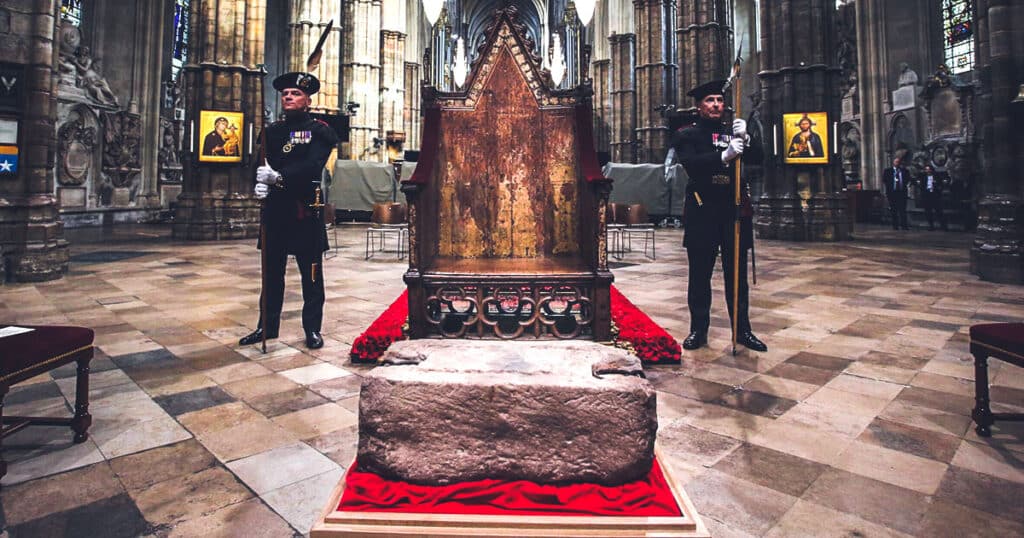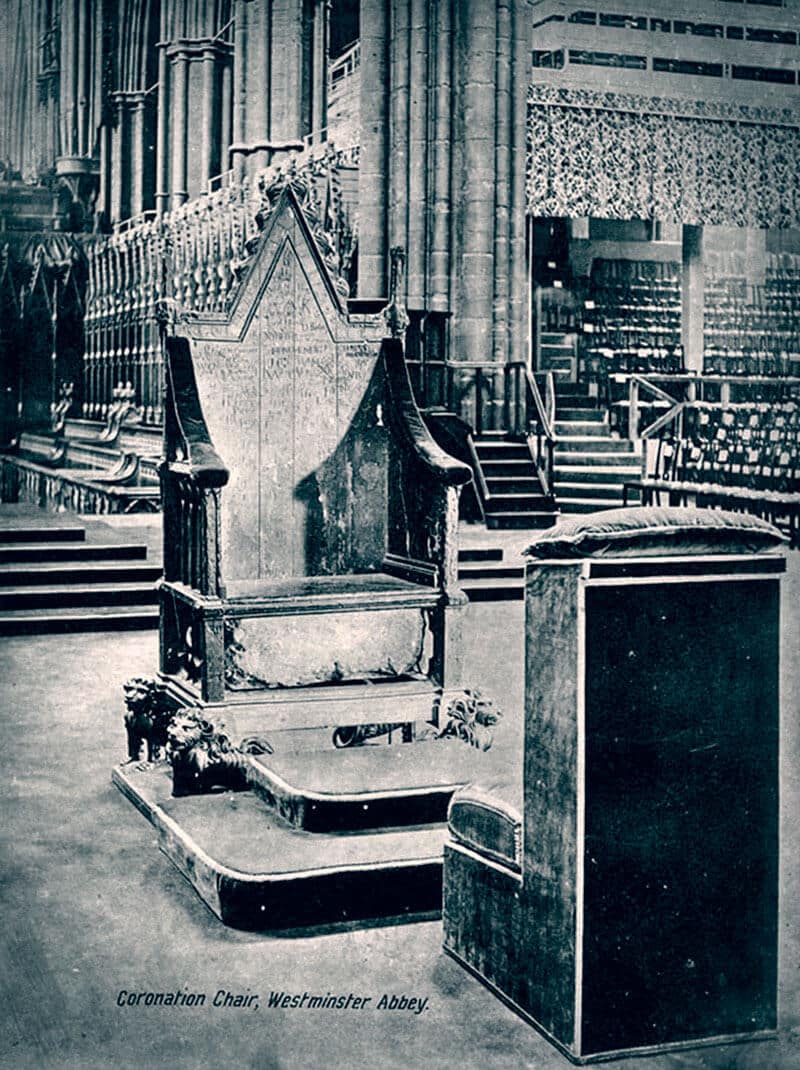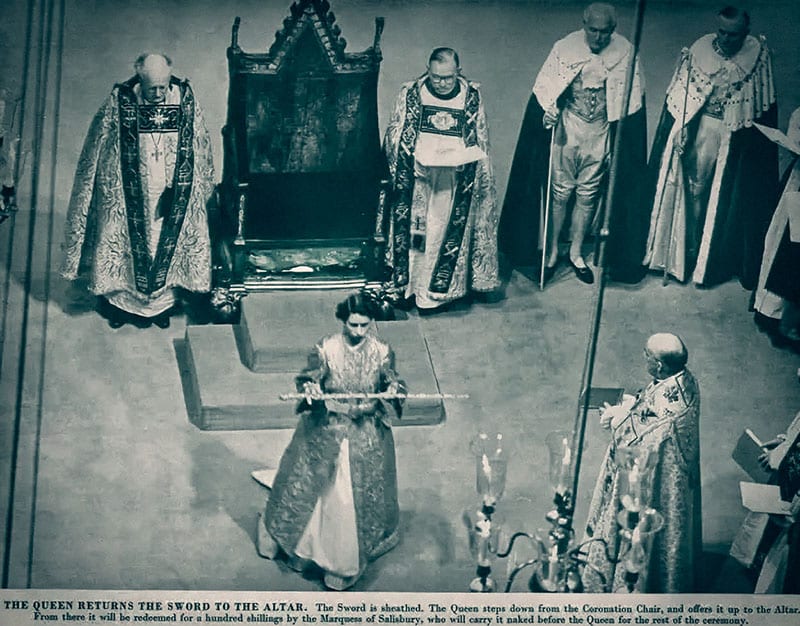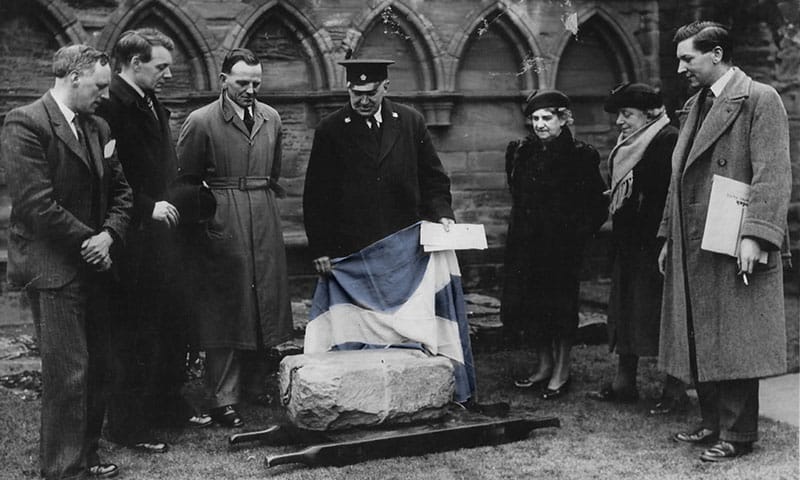
Hold onto your kilts, folks, because the 125-kilogram Stone of Scone or ‘Stone of Destiny’ has left Edinburgh Castle for the first time in 25 years for the coronation of King Charles III! This stone may seem like just a regular old rock, but it is actually a sacred object with an incredible history. It has been an ancient symbol of Scotland’s monarchy for centuries, used to inaugurate its kings.
There has been speculation about its origins and journey to become the symbol of Scottish royalty. Some say it travelled from faraway lands, crossing Europe with different groups, until it finally arrived in Scotland with Fergus, the first king of the Scots. According to legend, Fergus was even crowned on the stone around 500 A.D.
Geologists at Historic Environment Scotland, a public research institution based in Edinburgh, Scotland, put the stone through a technical examination in 1998 and determined the composition to be that of sandstone typically found in the Perthshire area of Scotland. This leads some historians to believe the stone most likely belonged to the Picts before they were conquered around 843 by Kenneth I, who is considered the founder of Scotland. Kenneth moved the stone to the town of Scone, Scotland, from which it later received its name.

In 1296, King Edward I (aka Longshanks) from England seized the stone and had it built into a new throne at Westminster Abbey. Ever since, the stone has been positioned underneath the Coronation Chair, which is situated in Westminster Abbey and has been used in every coronation since 1308.
There are doubts about the authenticity of the stone seized by Edward I. The Westminster Stone Theory suggests that the monks at Scone Palace concealed the actual stone in the River Tay or buried it on Dunsinane Hill and that the English soldiers were misled into taking a replacement. According to supporters of this theory, historical descriptions of the stone do not match the current one.
On June 11, 1914, during the 1912-1914 suffragette bombing and arson campaign, members of the Women’s Social and Political Union planted a bomb filled with nuts and bolts next to the Coronation Chair and Stone, resulting in an explosion. Despite the building being busy with 80-100 visitors, no serious injuries were reported. However, the blast did cause a corner of the Coronation Chair to be blown off and the Stone of Destiny to break in half – which wouldn’t be discovered until the stone was stolen in 1950.
The Canadian Connection to the Stone
During World War II, the possibility of German air raids causing damage or destruction to the Coronation Chair prompted its relocation to Gloucester Cathedral for the duration of the war. Similarly, concerns about the Stone of Destiny falling into German hands led to it being hidden behind old lead coffins in a burial vault below Abbot Islip’s Chapel in Westminster Abbey. Only a handful of individuals, including the Dean, Paul de Labilliere, and the Surveyor of the Fabric of Westminster Abbey, Charles Peers, knew of its hiding place. Fearing that the information could be lost if they were all killed during the war, Peers created three maps indicating the stone’s location. He sent two of them in sealed envelopes to Canada, one to Prime Minister William Lyon Mackenzie King, who placed it in the Bank of Canada’s vault in Ottawa, and the other to the Lieutenant Governor of Ontario, who kept his envelope in the Bank of Montreal in Toronto. After verifying that the envelopes had arrived, Peers destroyed the third map he had kept in his bank.

The Heist at Westminster Abbey
On Christmas Day in 1950, a group of Scottish students broke into Westminster Abbey and stole the Stone of Destiny. The act was led by Ian Hamilton, who believed that the Stone was a symbol of Scottish national pride that had been wrongfully taken by the English. The students took the stone back to Scotland with the intention of returning it to its rightful place in Scone Abbey, near Perth. They had a Scottish stonemason repair the stone back into one piece, who placed a brass rod in the middle, containing a piece of paper. What was written on the paper remains unknown.
Some believe that the stonemason actually created a replica and that the real Stone of Destiny never returned to England – which could explain the geotechnical analysis in 1998. Of course, if the monks successfully hid the original stone from Edward I in 1296, it would now be a forgery of a forgery.
On discovering that the Stone was missing, the authorities closed the border between Scotland and England for the first time in four hundred years. The theft caused a sensation in both Scotland and England and the students eventually left the stone on the High Altar at Arbroath Abbey where, in 1320, the assertion of Scottish nationhood was made. After being found, it was returned to Westminster Abbey. Most involved eventually confessed, but the authorities decided not to prosecute as the potential for the event to become politicised was far too great.

In 1996, the British government agreed to return the Stone of Destiny to Scotland as a demonstration of “friendship” on the condition that it would be brought back to Westminster Abbey for any future coronations. Since then, the stone has been kept on display at Edinburgh Castle, except for special occasions such as the coronation of King Charles III in 2023.
If you watch the coronation, keep in mind, that is no average stone the new King is sitting upon. It is a mysterious historical relic, of uncertain provenance, that was stolen at least twice and still offends some Scots.
